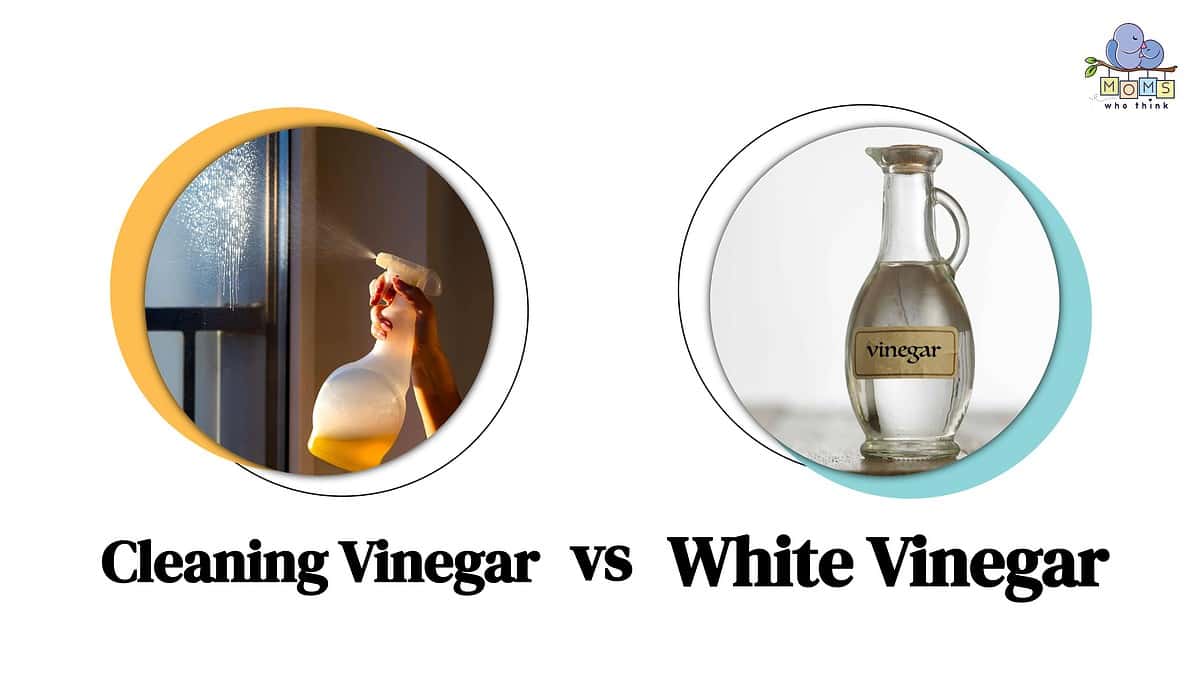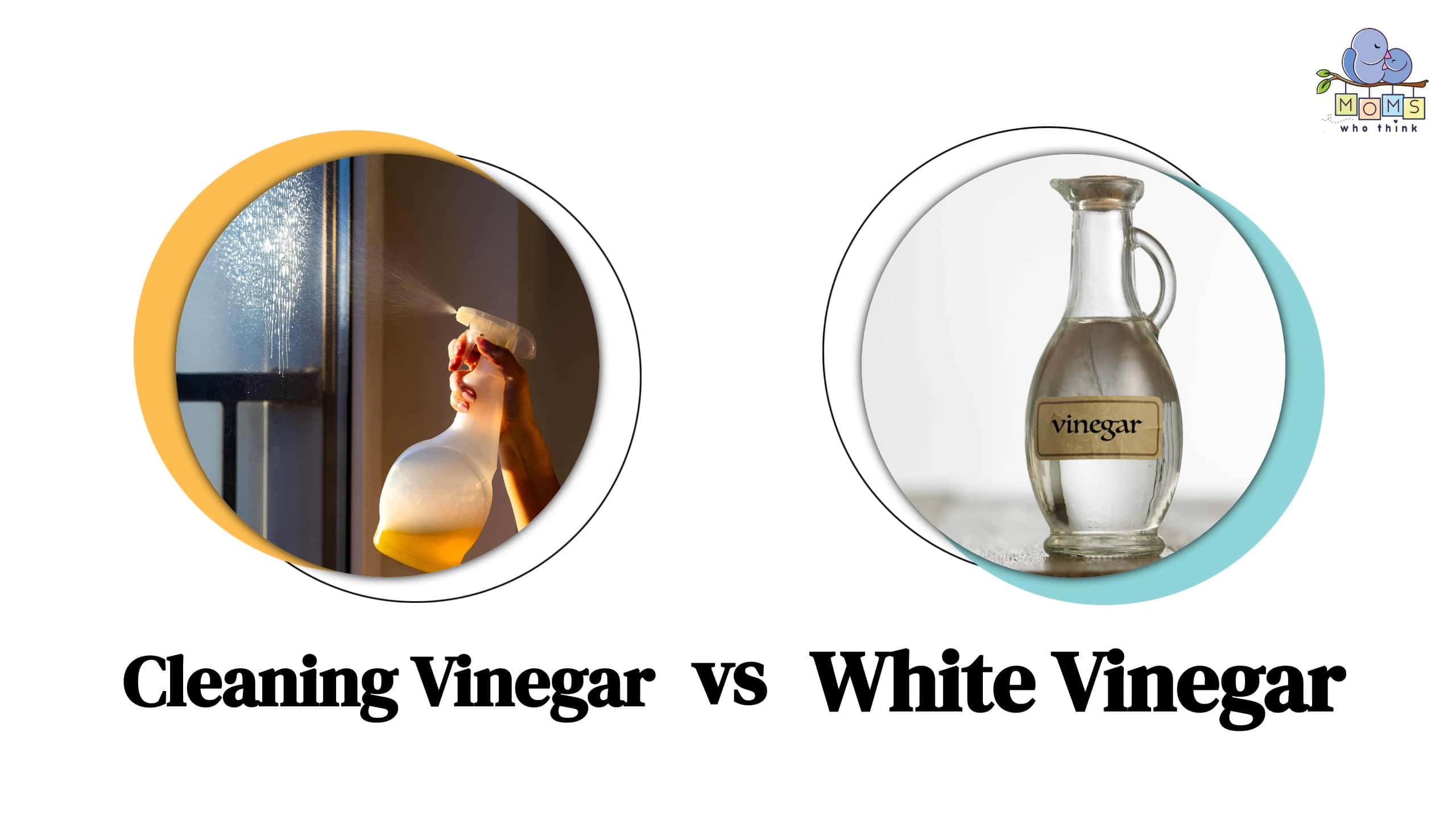Cleaning vinegar vs. white vinegar: Is there much of a difference when it comes to the ingredients? You might be surprised that there's not much of a difference. They have different purposes and slightly different ingredients, but only a few details distinguish them.
Vinegar has existed for thousands of years, dating back to the Babolyon period. It was used for cleaning and cooking. Today, cleaning and white vinegar are still used for cleaning and cooking. They are used to make salads, sauces, and other foods. But are they interchangeable? Can you use white vinegar for cleaning if you don't have cleaning vinegar?
This guide answers all of those questions and more. We look at the differences between these vinegars and what makes them unique. We also look at how they are optimally used for cleaning purposes.
What's Cleaning Vinegar?

Cleaning vinegar is made with acidic ingredients that help remove stains from walls and carpets. It's perfect for cleaning bathrooms, especially if you want grime and dirt off the toilet.
Cleaning vinegar is made by the fermentation of ethanol, which is alcohol. If you buy it at grocery stores, you may find it's made up of 6% ethanol and 95% water. While vinegar is great for cleaning, it's not a disinfectant like Clorox wipes. To repeal this smell, cleaning vinegar is sometimes mixed with rosemary or lemon scent to mask the smell of the vinegar.
Here are the best applications for using cleaning vinegar for cleaning:
- Cleaning your stove.
- Cleaning your bathroom sink and toilets.
- Cleaning your kitchen sink and countertops.
- Cleaning a dirty microwave.
- Cleaning dirty stains from your kitchen flooring.
There are some of the most popular ways to use cleaning vinegar, but there are also other creative ways you can use it, like cleaning your barbecue grill or something entirely else.
However, there are also things you should avoid cleaning with cleaning vinegar because it could damage it. You should avoid applying cleaning vinegar to wood flooring. The acidity of cleaning vinegar causes damage to the wood. You should avoid cleaning vinegar on marble, granite, and metal surfaces.
What's White Vinegar?
Compared to cleaning vinegar, white vinegar has less acidicity. While it can still be used for cleaning because of its acidity, white vinegar is typically less effective. It's more used for salads and other kinds of foods than it is for cleaning.
The major difference between white vinegar and cleaning vinegar is that white vinegar has less than 5% acidity. It's purpose is solely for cooking with it. While cleaning, vinegar should never be consumed for eating.
White vinegar has been used for cooking some of the best foods for centuries. Here's a list of some of the most popular foods with white vinegar.
- Pickles that marinate in white vinegar.
- Make buttermilk with white vinegar.
- Substitute for the cream of tarter.
- Make a pie crust with white vinegar.
These are just some ideas to consider with white vinegar. You can find many more recipes with white vinegar that are perfect for salads, substitutions, and more.
What's Better Cleaning?
Cleaning vinegar is the better choice for cleaning because it has more acidity, that's better for removing stains. It also has a higher percentage of alcohol. This concentration of acidity ranges from 6% to 75%, making it better to kill bacteria.
You can find cleaning vinegar at your local stores. Some brands sell it with more acid to make it better for removing bacteria. However, it's important to remember that you want to avoid it on wood and marble items. You should also consider getting cleaning vinegar with a unique smell. Some brands sell cleaning vinegar with a lemon or different smell to it that masks the bold smell of vinegar.
However, white vinegar still works well if you don't have cleaning vinegar. It may also not kill the bacteria, but it's still a cleaning agent designed for bathrooms, sinks, stoves, and microwaves.
What Else Should You Know About Them?
While white vinegar and cleaning vinegar are slightly different when it comes to acidity. For instance, cleaning vinegar has more acidity, which makes it stronger and better for cleaning. White vinegar is purified and has less acidity, making it perfect for eating and making sauces and dressings. However, it would be best if you never ate with cleaning vinegar because of the impurities that might be in it.
Overall, cleaning vinegar and white vinegar are great for cleaning, especially if you want to avoid Clorox or other kinds of disinfectant wipes. Knowing more about them can give you an idea of what's better for cleaning.

